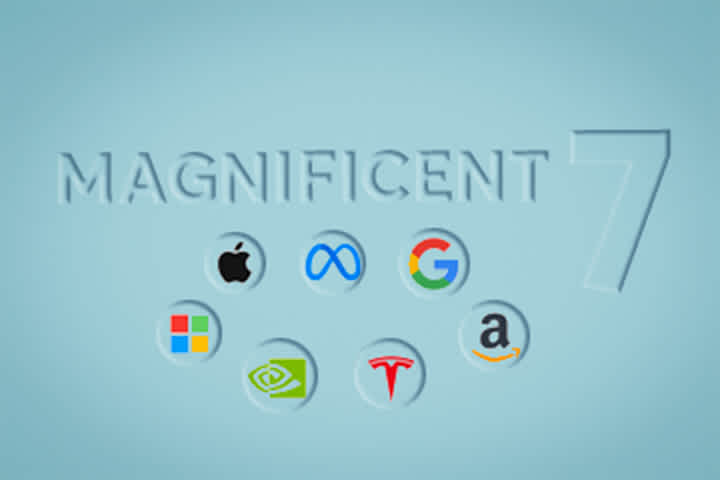Has the obesity trade peaked?
Keytrade Bank
keytradebank.be
February 18, 2025
3 minutes to read
Obesity drug shares have slimmed down in recent months. Novo Nordisk has even lost 40% of its stock market value against its peak. What's going on, and does this offer an opportunity to buy?
Some drugs have changed the world forever. Penicillin has proven highly effective against bacterial infections, insulin has made diabetes manageable, and cholesterol inhibitors have drastically reduced the risk of cardiovascular disease. Each and every one of these medical breakthroughs have saved and improved millions of lives. In recent years, a new class of drugs seems to have joined the club. And they may even surpass all their predecessors in terms of impact: GLP-1 agonists.
From diabetes treatment to weight loss jab
GLP-1 agonists mimic a natural hormone that keeps our blood sugar level balanced. These drugs were originally developed for diabetes, but were later found to work as a slimming aid as well. Weekly injections curb the appetite and delay gastric emptying, causing the pounds to drop off quickly and effectively.
According to the World Health Organisation, more than 2.5 billion adults worldwide are overweight, with 1 billion of those severely overweight. Around 390 million children and young people are also overweight. This is a worrying trend from a health perspective, but for the pharmaceutical companies developing these drugs it primarily means a huge market that is still growing.
The next breakthrough?
In addition, GLP-1 agonists have been shown to do much more than just control diabetes and promote weight loss. In March 2024, semaglutide (known as Ozempic and Wegovy, made by Danish multinational Novo Nordisk) was given the green light in the US for the treatment of cardiovascular disease in overweight people. Shortly afterwards, tirzepatide (Mounjaro and Zepbound, made by US multinational Eli Lilly and Company) achieved promising results for sleep apnoea, in which breathing repeatedly stops and starts during sleep. Eli Lilly has since also received approval for this condition from the US Food and Drug Administration. And these are just a few of the approvals these companies have garnered for their blockbuster products. And it doesn't stop there. According to The Economist, researchers are now testing these drugs on a wide range of other conditions from liver and kidney disease to Alzheimer's and even drug addiction. If GLP-1 agonists were to force a breakthrough there as well, it could turn the pharmaceutical world upside down for good.
Many investors are certainly making the most of it, but how long will it last?
The euphoria surrounding these "miracle drugs" has propelled the pharmaceutical companies making them to unprecedented heights. Novo Nordisk became Europe's most valuable company, while Eli Lilly grew to become the most valuable pharmaceutical company in the world. Many investors flocked to the so-called obesity trade, which led to sky-high stock market valuations.
However, the investment craze has cooled somewhat in recent months. In December 2024, a promising test of Novo Nordisk's new obesity drug failed. The company then lost 90 billion euros in market value in one fell swoop, while Eli Lilly reported lower sales figures for two consecutive quarters.
Both shares have lost ground since their peak in the summer of 2024. Novo Nordisk in particular took a hit and fell from its record high by about 40% in June (situation as at 6 February 2025) and is no longer the most valuable company in Europe. The damage to Eli Lilly is more limited: since September 2024, the share price has fallen by about 10% (situation as at 6 February 2025).
A field full of competitors
Demand for GLP-1 agonists is huge, but how big the market will ultimately become for the two frontrunners remains a question mark. Novo Nordisk and Eli Lilly are facing increasing competition from emerging biotech companies. Like them, these new players are working on cheaper, easier and more effective variants, such as tablets instead of injections and formulas with fewer side effects. For example, Biotech start-ups Verdiva Bio and Kailera Therapeutics have each raised more than 400 million dollars, while Metsera achieved an impressive IPO at the end of January. Meanwhile, pharmaceutical giants such as Amgen, Roche and Viking Therapeutics are developing their own alternatives.
Although it could be years before these new drugs reach the market, the increasing competition is making the long-term outlook less rosy for investors. And with the current market leaders' high valuations, doubts are growing: have Novo and Lilly already peaked? Another stumbling block remains production capacity. Since GLP-1 agonists were officially approved as a weight-loss drug in the US in 2021,demand has outstripped supply. This makes it difficult to estimate the actual market size and growth potential. In addition, Novo Nordisk's Wegovy and Ozempic have recently been selected for Medicare's price negotiations. This means that from 2027, the company will likely have to lower its prices in the US, a factor that will put pressure on future profit margins. And finally, there is a geopolitical story, too. In January, Donald Trump threatened Denmark with high import tariffs. The US president wants to buy Greenland, even though it's an autonomous territory of Denmark and not for sale. This threat creates additional uncertainty for Novo Nordisk investors.
Who are the winners?
Until recently, obesity drugs were the number one investment in the pharmaceutical industry. Investors considered them the AI equivalent of healthcare, a trend that everyone understood and embraced almost blindly. While Novo Nordisk and Eli Lilly have long seemed untouchable, cutting up the cake among themselves, recent developments have shown that their dominant position is not a given. The market is still huge, but increasing competition, stricter price controls and growing investor concerns are weighing on prices.
The question for investors is no longer whether GLP-1 agonists are going to change the world, as it will undoubtedly do so. The real question is: which companies will ultimately emerge as winners?
Is this a buying opportunity?
The foundations of Eli Lilly and Novo Nordisk remain strong: they still dominate the obesity market and have a proven track record of innovation. In addition, further approvals for broader applications may open up new areas of growth. In early February, Novo Nordisk also presented its operating results, which were well received by investors. The Danish company also expects to be able to launch a weight-loss pill on the US market before Eli Lilly.
After disappointing in December, Novo Nordisk was also able to present positive results for another weight-loss drug. While Novo Nordisk is primarily active in the development of drugs for diabetes, obesity and rare diseases, Eli Lilly has a much broader portfolio. In terms of diversification, Eli Lilly is more attractive, but Novo Nordisk's share is much lower at 23 times the expected profit for 2025. Eli Lilly is trading at 37 times its expected profit for 2025 (situation as at 6 February 2025). In early February, Eli Lilly also released quarterly figures that pleased investors once again. The earlier correction both shares experienced could therefore present a buying moment for investors who are willing to take the risk.
Spread, spread, spread
However, these obesity shares are in for a bumpier ride, as more competitors enter the market, better alternatives emerge, and patents expire. Investors who get on board must be willing to accept volatility and keep their eye on the horizon for several years. This is exactly why diversification can be a wise approach. You can do this in various ways:
- Other pharmaceutical giants.Companies such as Roche, Amgen and Pfizer are working on their own GLP-1 variants and have a broad portfolio of drugs and treatments, making them less dependent on one specific trend.
- Biotech. Although riskier, biotech companies can offer interesting opportunities for investors who want to take advantage of new developments in the market.
- ETFs. An exchange-traded fund (ETF) focusing on the pharmaceutical sector, biotech or even specifically on obesity offers a more diversified exposure without investors having to select individual shares.
- Investment funds. Investment funds investing in healthcare and pharmaceuticals can be a balanced way to gain exposure to the sector without the volatility of individual shares. The managers select the shares they feel have most potential, so you don't have to do this homework yourself.
For those who remain convinced of the GLP-1 revolution, the recent corrections may offer buying opportunities, although a selective approach remains essential. Diversification within and outside the sector remains the smart approach to spread the risks better.
Invest in trackers or funds related to this theme?
• Log in to Keytradebank.be on your laptop or desktop
• Click on Advanced in the search window
• Tick Tracker and/or Fund
• Search for the term health, biotech or obesity


